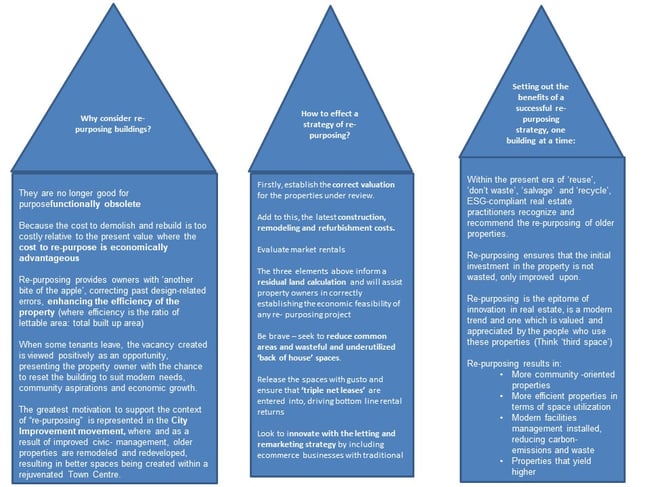Much before the onset of the COVID-19 pandemic, an already beleaguered real estate sector had real estate practitioners seeking out ways to making their properties more efficient and valuable. Beyond technology-led changes, few professionals in the real estate sector have a view on ‘their place in the Anthropocene’. Many of my colleagues though have a much keener interest in when their tenants will pay their rentals!
What the COVID-19 crisis has done is to channel more attention within the industry
to re-evaluate both the constraints and opportunities that their ‘assets’ offer.
People’s behaviour and movement have been fundamentally reshaped by the crisis,
and so has their relationship with retail spaces like shopping malls.
Just because a building is called a ‘shopping mall’ does not commit it to remain a mall forever.
A recent ‘wow’ winning moment for me was when I persuaded the owner of a retail portfolio to review their entire letting strategy and to consider the re-purposing of two of their malls to integrate multiple purposes. The arguments that I presented in support of my proposal and being a longstanding RICS member, assisted the Client in engaging me to give effect to the re-purposing project.
Yesterday’s shopping malls could be better used as mixed-use developments, including a shopping component, alongside a medical clinic, parking garage, an eCommerce fulfillment center, and even an inner-city urban farm.
Figure 1: Why, How and the benefits of re-purposing

“Retailers exist to manage and expand the adventure of their retailing craft, to serve their customers, to sell goods and services to customers. Landlords and Developers exist to ensure that Retailers can practice their craft.” (Donny Gordon, founder – Liberty International)
In a nutshell, mall owners and developers are responsible to ‘bring in the crowds’, and retailers are responsible for carrying out sales and conversions. When times change and retail-chains consider store closures, the following issue is traditionally only considered:
Cancel the lease and ‘get out’ at all costs, leaving the other party with the problem. This leads to a ‘lose-lose’ mentality applying to both Landlords and Tenants, with each party thinking that they are getting an advantage over the other.
Both parties seem to forget they are dependent on each other due to the following reasons:
Why are retailers and retail centre landlords operating devoid of daily sales values?
The answers are -
Due to COVID-19, the results of the poor noted above practices (by both parties) have been accelerated and are exposing worsening property fundamentals like:
What is left behind if a property solutioneering-orientation is not adopted:
Solutioneering through applied repurposing:
Re-purposing results: